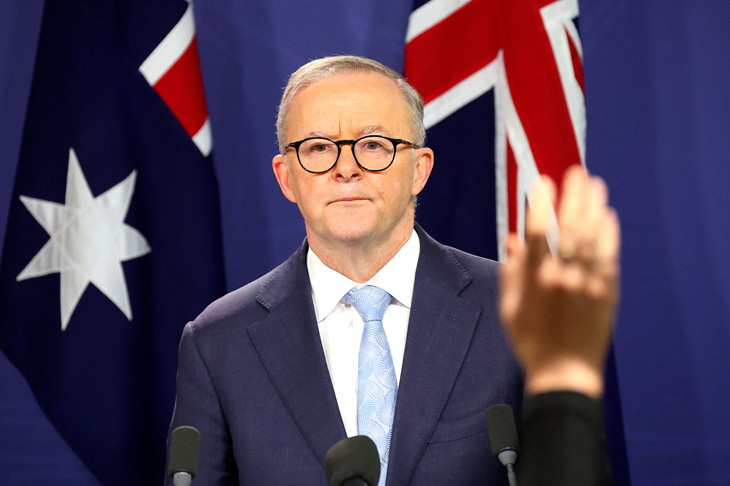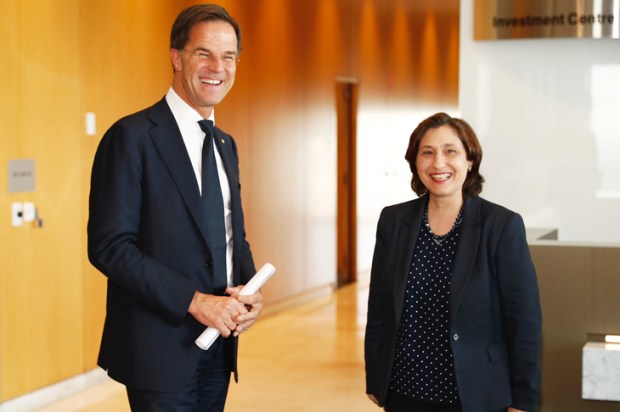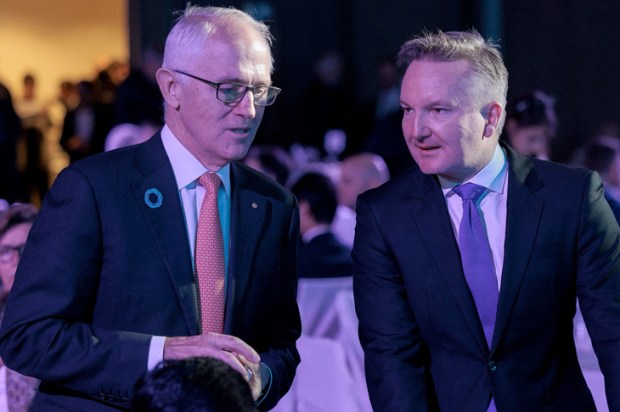The Prime Minister has flagged that, post the Voice referendum, his government will turn its full attention to the decarbonisation of the economy and the prospect of Australia becoming an renewable energy superpower.
You really have to wonder whether Albo is smoking something if he thinks that moving from the toxic and divisive issue of the Voice to the fantasy world of climate action is a good idea. But if you live in the world of the vibe, one vibe is as good as another.
By contrast, most of us are living in the real world, wondering how we can cover the mortgage and the bills, getting the kids to school on time and thinking about what’s for dinner. Prosaic stuff to be sure, but beautiful thoughts about identity politics and climate change are generally back of mind, if at all.
To be sure, surveys tell us that people are concerned about climate change, which is not altogether surprising given the unrelenting and misleading conflation of weather and climate change perpetrated by all the mainstream media outlets. Several hot days in Sydney – climate change. Limited flooding in parts of Victoria – climate change. Bushfire warnings for parts of the east coast – climate change.
The implicit message is that Australia alone – or should that be NSW or the city of Sydney – can affect the pace of climate change and therefore reduce the incidence of unwelcome weather events. Most school students – OK, some, OK a few – would realise that this is a complete non sequitur as only global action counts.
But what the surveys also reveal is that, notwithstanding people’s concerns about climate change – economists call this elicitation bias or wanting to sound worthy – when it comes to bearing any additional financial burden to act on climate change, there is a marked reluctance to pay any significant price at all. The recent 20-per-cent rise in electricity prices, for instance, is well above the rate of increase that people are happy to pay for the sake of doing something about the climate.
The real paradox is why Albo thinks it’s an attractive political idea to emphasise the energy transition and the exciting world that lies ahead. Let’s face it, it hasn’t been going well, what with delays in the commissioning of new renewable projects, the growing opposition to the construction of new transmission lines and, let’s not forget, the disastrous Snowy 2.0 project. If I were to run a book on when Snowy 2.0 will be fully up and running, I’m not sure I would have too many bets on this decade.
I could do a similar thing with offshore wind installations, as the economics of these projects overseas deteriorate to the point that most investment is currently stalled. Rising costs, worker and equipment shortages and higher interest rates are an uncongenial mix. The UK government ran a tender for new offshore wind projects recently and there was not a single bid because the strike price was set too low.
The rent-seekers in this space in the US have declared that a doubling of the prices they receive is now necessary to make offshore wind a viable investment. This is another counter to the ludicrous proposition that renewables are the cheapest way to generate electricity, something to which Albo still clings.
The one bright light in the energy transition has been the rapid growth in rooftop solar by households and some businesses. This is seen as one means to save on electricity bills in the context of very limited options. According to the Clean Energy Regulator, ‘Australian households and businesses continue to install rooftop solar at world leading rates. 1.6 gigawatts of capacity from almost 160,000 rooftop systems were added in the first half of 2023. Three gigawatts would bring the amount of rooftop solar capacity added to the grid close to the 2021 record of 3.2 GW’.
There are two reasons for mentioning this. The first is that households’ fondness for their rooftop solar panels often morphs into their support for renewable energy more generally – something recognised by state politicians, in particular. The continued subsidisation of rooftop solar installations, albeit at reduced levels, is partly explained by the ability to cadge additional votes.
Secondly, the unexpected rise in rooftop solar is playing havoc with the economics of large-scale solar installations. For several hours during the day, electricity prices can be deeply negative. Those large-scale solar installations are in effect competing with rooftop solar.
To be sure, most of the large-scale installations have been backed by power purchase agreements or similar (mainly from state governments) which guarantee the investors/operators certain prices. But the reality is that large-scale solar is looking like a particularly bad investment bet at the moment save a substantial step-up in the prices being offered. It is already clear that the expected roll-out of new projects has significantly slowed this year.
Again as the Clean Energy Regulator notes, ‘it was a quiet first half of the year for new large-scale renewable energy investment (including wind) commitments. We’ve downgraded out expectations and now expect 2023 investment may not reach three gigawatts’.
Even the deep-green Australian Energy Market Operator doesn’t expect the 82 per cent renewable energy target by 2030 to be met. No doubt, Albo will have to downplay these real world realities.
And he definitely won’t want to mention the fact that the Victorian government is now propping up not one, but two coal-fired power stations in the anticipation that its energy transition plans are in tatters. The only feasible alternative is to hand out hundreds of millions of taxpayer dollars – although precise figures are kept under wraps – so they don’t close down. The NSW government will start handing out big bucks to the owner of Eraring to keep that plant going.
Let’s not forget that the cost curve for these plants resembles a bathtub. Towards the end of their lifespans, the costs increase dramatically particularly when they are used to back up intermittent renewable energy, something for which they are not designed.
He might also want to avoid talking too much about the much-vaunted green hydrogen revolution, something for which other rent-seekers are keen to hoover up as much government money as possible. It’s becoming clear that, at best, hydrogen will play a niche role in the energy transition.
Using intermittent energy to power electrolysers to produce hydrogen is inherently inefficient and the problems of transport and bespoke infrastructure just add to the costs. The winners are likely to be close to the demand and blue hydrogen (made from gas) has much more going for it in terms of costs than green hydrogen.
The idea that Australia will become an energy superpower on the basis of green hydrogen is fanciful notwithstanding the ongoing enthusiasm of Twiggy. It’s a bit like the underground electricity cable from the Northern Territory to Singapore – ain’t going to happen.
Albo may need to move onto another vibe – it’s just not clear what it will be.
Got something to add? Join the discussion and comment below.
Get 10 issues for just $10
Subscribe to The Spectator Australia today for the next 10 magazine issues, plus full online access, for just $10.
You might disagree with half of it, but you’ll enjoy reading all of it. Try your first month for free, then just $2 a week for the remainder of your first year.














Comments
Don't miss out
Join the conversation with other Spectator Australia readers. Subscribe to leave a comment.
SUBSCRIBEAlready a subscriber? Log in